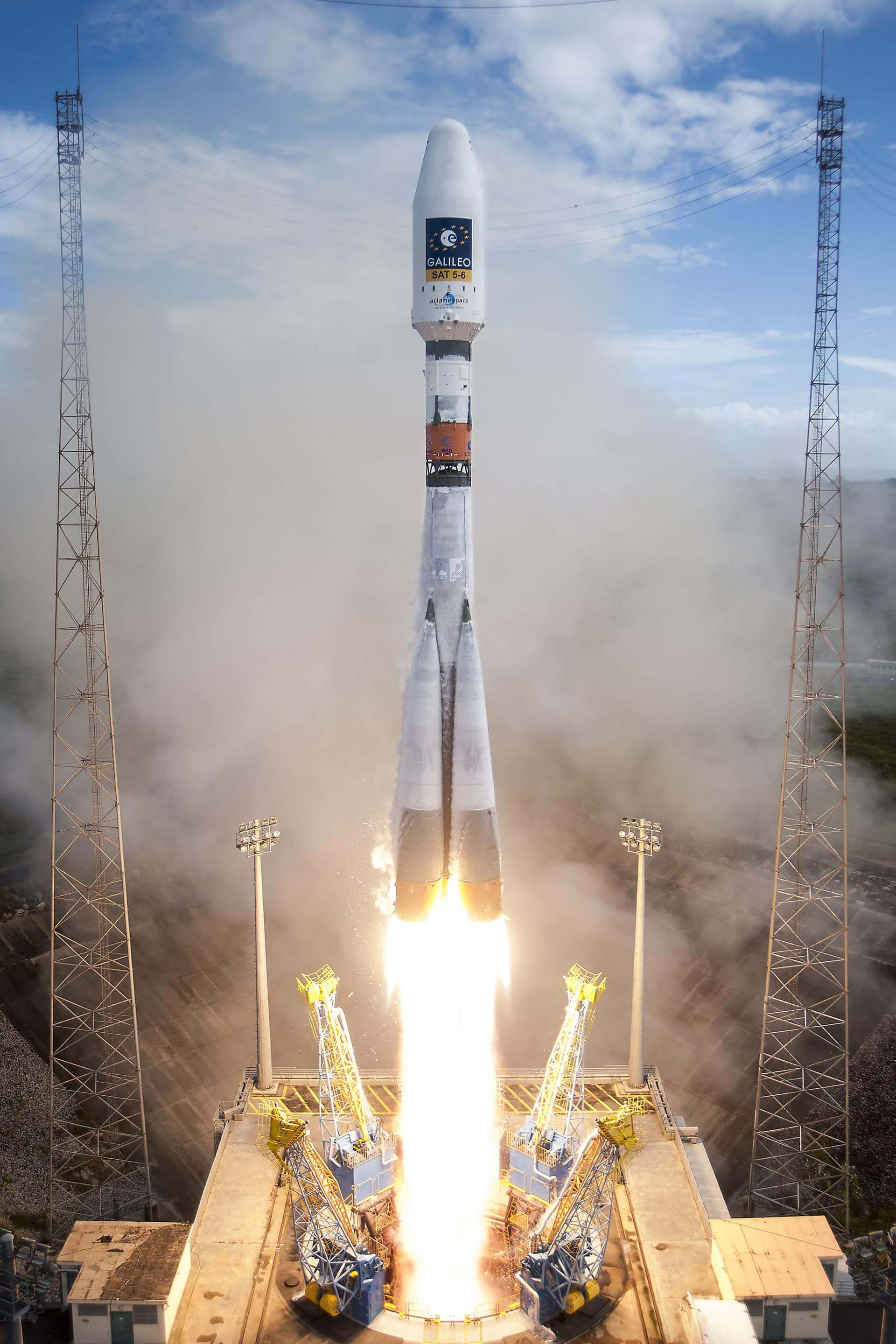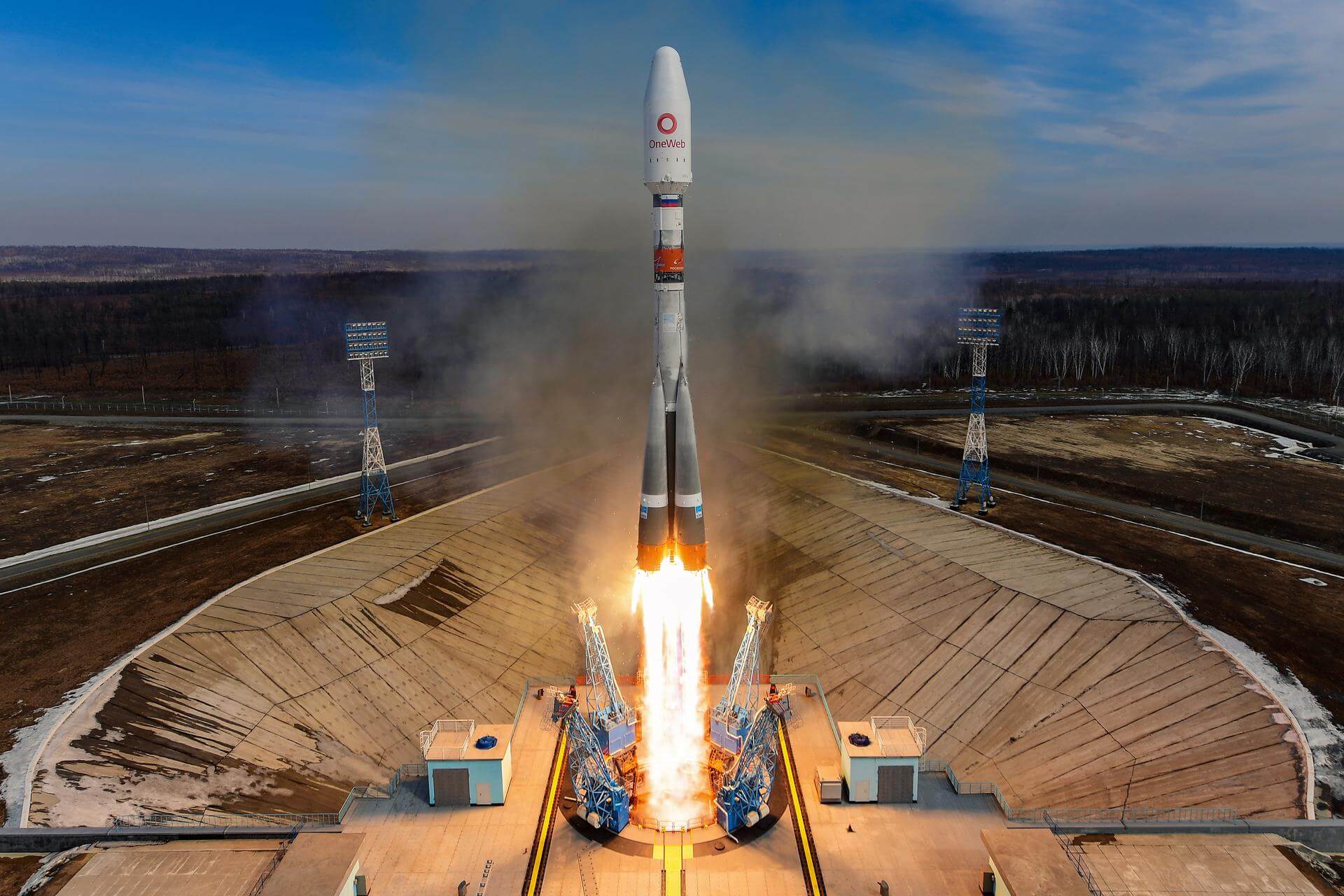
Soyuz STB
ActiveProgress Rocket Space Center (PRSC)
Oct. 21, 2011
Description
The 2.1b version adds an upgraded engine (RD-0124) with improved performance to the second stage. First launch took place from Plesetsk Cosmodrome Site 43 on 26 July 2008 with a classified military payload. The 2.1b/ST version is sometimes called Soyuz ST-B.
Specifications
-
Stages
3 -
Length
46.3 m -
Diameter
2.95 m -
Fairing Diameter
― -
Launch Mass
312.0 T -
Thrust
―
Family
-
Name
Soyuz STB -
Family
― -
Variant
STB/Fregat -
Alias
― -
Full Name
Soyuz STB Fregat
Payload Capacity
-
Launch Cost
― -
Low Earth Orbit
8200.0 kg -
Geostationary Transfer
Orbit
3250.0 kg -
Direct Geostationary
― -
Sun-Synchronous Capacity
4900.0 kg
Progress Rocket Space Center
Commercial
CEO: Dmitry Baranov
PRSC 1996Progress Rocket Space Centre, formerly known as TsSKB-Progress, is a space science and aerospace research company which is known for manufacturing launch vehicles and satellites. Most notably, Progress Rocket Space Centre is the manufacturer of Soyuz launch vehicles.
Soyuz STB/Fregat | OneWeb 13
Progress Rocket Space Center | RussiaGuiana Space Centre, French Guiana
Feb. 10, 2022, 6:09 p.m.
Status: Launch Successful
Mission:
A batch of 34 satellites for the OneWeb satellite constellation, which is intended to provide global Internet broadband service for individual consumers. The constellation is planned to have around 648 microsatellites (of which 60 are spares), around 150 kg each, operating in Ku-band from low Earth orbit.
Polar OrbitSoyuz STB/Fregat | Galileo L11 (FOC FM23-FM24)
Progress Rocket Space Center | RussiaGuiana Space Centre, French Guiana
Dec. 5, 2021, 12:19 a.m.
Soyuz STB/Fregat | CSG-1, CHEOPS, & others
Progress Rocket Space Center | RussiaGuiana Space Centre, French Guiana
Dec. 18, 2019, 8:54 a.m.
Status: Launch Successful
Mission:
The COSMO-SkyMed Second Generation satellite (CSG-1) is an Earth observation spacecraft featuring state-of-the-art technologies and engineering solutions, further bolstering Italian leadership in this sector. It's one out of two satellites to replace the first generation COSMO-SkyMed system. This second-generation system, including its ground segment, will set a new performance standard for space-based radar observation systems in terms of precision, image quality and the flexibility of user services. It is a dual (civil/military) system, designed to address the requirements of both commercial and government customers, as well as the scientific community. The COSMO-SkyMed Second Generation satellites are equipped with synthetic aperture radar (SAR), capable of observations under any weather or light conditions, day or night. The Characterising Exoplanet Satellite (CHEOPS) is an ESA mission implemented in partnership – in particular with Switzerland. CHEOPS is the first mission dedicated to studying bright, nearby stars that already are known to host exoplanets in order to make high-precision observations of the planet's size as it passes in front of its host star. The spacecraft will focus on planets in the super-Earth to Neptune size range, with its data enabling the bulk density of the planets to be derived – a first characterization step towards understanding these alien worlds. Flight also includes 3 auxiliary payloads: OPS-SAT, EyeSat, ANGELS. OPS-SAT is the world’s first free-for-use, in-orbit test bed for new software, applications and techniques in satellite control. It enables new software to be tested in orbit. In the first year of operation, OPS-SAT will host over 100 in-flight experiments submitted from many ESA Member States. EyeSat is a 3U CubeSat designed to study the zodiacal light and image the Milky Way. It's fitted with an instrument called IRIS, which is a small space telescope. ANGELS is a 12U CubeSat, and is the French industry’s first nanosatellite. The satellite will be fitted with a miniaturized ARGOS Néo instrument, which is 10-times smaller than the equivalent previous-generation device. The instrument collects and determines the position of low-power signals and messages sent by the 20,000 ARGOS beacons now in service worldwide.
Sun-Synchronous OrbitSoyuz STB/Fregat | O3b FM17-20
Progress Rocket Space Center | RussiaGuiana Space Centre, French Guiana
April 4, 2019, 5:03 p.m.
Soyuz STB/Fregat | OneWeb 1 (F6)
Progress Rocket Space Center | RussiaGuiana Space Centre, French Guiana
Feb. 27, 2019, 9:37 p.m.
Status: Launch Successful
Mission:
OneWeb satellite constellation is intended to provide global Internet broadband service for individual consumers. The constellation is planned to have around 720 microsatellites, around 150 kg each, operating in Ku-band from low Earth orbit. Eventually it can be expanded to include extra 1260 satellites, for a total of 1980.
Polar Orbit #VS21Soyuz STB/Fregat | O3b FM13-16
Progress Rocket Space Center | RussiaGuiana Space Centre, French Guiana
March 9, 2018, 5:10 p.m.
Soyuz STB/Fregat | Galileo L7 (FOC FM10-FM11)
Progress Rocket Space Center | RussiaGuiana Space Centre, French Guiana
May 24, 2016, 8:48 a.m.
Status: Launch Successful
Mission:
The 9th and 10th Full Operational Capability satellites will be the 13th and 14th Galileo satellites launched, alongside the 8 FOC and 4 IOV spacecraft already in orbit. The Galileo constellation is ESA's satellite navigation system and is expected to be completed by 2020. Galileo will provide Europe with an alternative to the American GPS and Russian GLONASS constellations, but will be interoperable with both systems.
Medium Earth OrbitSoyuz STB/Fregat | Galileo L6 (FOC FM08-FM09)
Progress Rocket Space Center | RussiaGuiana Space Centre, French Guiana
Dec. 17, 2015, 11:51 a.m.
Status: Launch Successful
Mission:
The 7th and 8th Full Operational Capability satellites will be the 11th and 12th Galileo satellites launched, alongside the 6 FOC and 4 IOV spacecraft already in orbit. The Galileo constellation is ESA's satellite navigation system and is expected to be completed by 2020. Galileo will provide Europe with an alternative to the American GPS and Russian GLONASS constellations, but will be interoperable with both systems.
Medium Earth OrbitSoyuz STB/Fregat | Galileo L5 (FOC FM05-FM06)
Progress Rocket Space Center | RussiaGuiana Space Centre, French Guiana
Sept. 11, 2015, 2:08 a.m.
Status: Launch Successful
Mission:
The 5th and 6th Full Operational Capability satellites will be the 9th and 10th Galileo satellites launched, alongside the 4 FOC and 4 IOV spacecraft already in orbit. The Galileo constellation is ESA's satellite navigation system and is expected to be completed by 2020. Galileo will provide Europe with an alternative to the American GPS and Russian GLONASS constellations, but will be interoperable with both systems.
Medium Earth OrbitSoyuz STB/Fregat | Galileo L4 (FOC FM03-FM04)
Progress Rocket Space Center | RussiaGuiana Space Centre, French Guiana
March 27, 2015, 9:46 p.m.
Status: Launch Successful
Mission:
The 3rd and 4th Full Operational Capability satellites will be the 7th and 8th Galileo satellites launched, alongside the 2 FOC and 4 IOV spacecraft already in orbit. The Galileo constellation is ESA's satellite navigation system and is expected to be completed by 2020. Galileo will provide Europe with an alternative to the American GPS and Russian GLONASS constellations, but will be interoperable with both systems.
Medium Earth OrbitSoyuz STB/Fregat | O3b FM9-FM12
Progress Rocket Space Center | RussiaGuiana Space Centre, French Guiana
Dec. 18, 2014, 6:37 p.m.
Soyuz STB/Fregat | Galileo L3 (FOC FM01-FM02)
Progress Rocket Space Center | RussiaGuiana Space Centre, French Guiana
Aug. 22, 2014, 12:27 p.m.
Status: Launch was a Partial Failure
Mission:
These are the first two Full Operational Capability satellites of the Galileo constellation, ESA's satellite navigation system and is expected to be completed by 2020. Galileo will provide Europe with an alternative to the American GPS and Russian GLONASS constellations, but will be interoperable with both systems.
Medium Earth OrbitSoyuz STB/Fregat | O3b FM3, FM6-FM8
Progress Rocket Space Center | RussiaGuiana Space Centre, French Guiana
July 10, 2014, 6:55 p.m.
Soyuz STB/Fregat | Galileo L1 (IOV FM01-FM02)
Progress Rocket Space Center | RussiaGuiana Space Centre, French Guiana
Oct. 21, 2011, 10:30 a.m.
Status: Launch Successful
Mission:
The first two In Orbit Validation satellites of the Galileo constellation. The Galileo constellation is ESA's satellite navigation system and is expected to be completed by 2020. Galileo will provide Europe with an alternative to the American GPS and Russian GLONASS constellations, but will be interoperable with both systems. First launch of the Soyuz rocket from the Guiana Space Centre.
Medium Earth OrbitAtlas V 551
Amazon Leo (LA-04)
Space Launch Complex 41 - Cape Canaveral SFS, FL, USAAmazon Leo, formerly known as Project Kuiper, is a mega constellation of satellites in Low Earth Orbit that will offer broadband internet access, thi…
Long March 4B
Ziyuan-3-04
Launch Complex 9 - Taiyuan Satellite Launch Center, People's Republic of ChinaThe ZY-3 (Ziyuan-3, 'Resource-3') series represents China's first high-resolution, stereoscopic mapping satellites for civilian use. The second sa…
Falcon 9
Starlink Group 6-82
Space Launch Complex 40 - Cape Canaveral SFS, FL, USAA batch of 29 satellites for the Starlink mega-constellation - SpaceX's project for space-based Internet communication system.
Falcon 9
Starlink Group 15-12
Space Launch Complex 4E - Vandenberg SFB, CA, USAA batch of 27 satellites for the Starlink mega-constellation - SpaceX's project for space-based Internet communication system.
Electron
Raise and Shine (RAISE-4)
Rocket Lab Launch Complex 1B - Rocket Lab Launch Complex 1, Mahia Peninsula, New ZealandRAISE-4 (RApid Innovative payload demonstration Satellite-4) is a Japan Aerospace Exploration Agency (JAXA) satellite for on-orbit demonstrations of …


